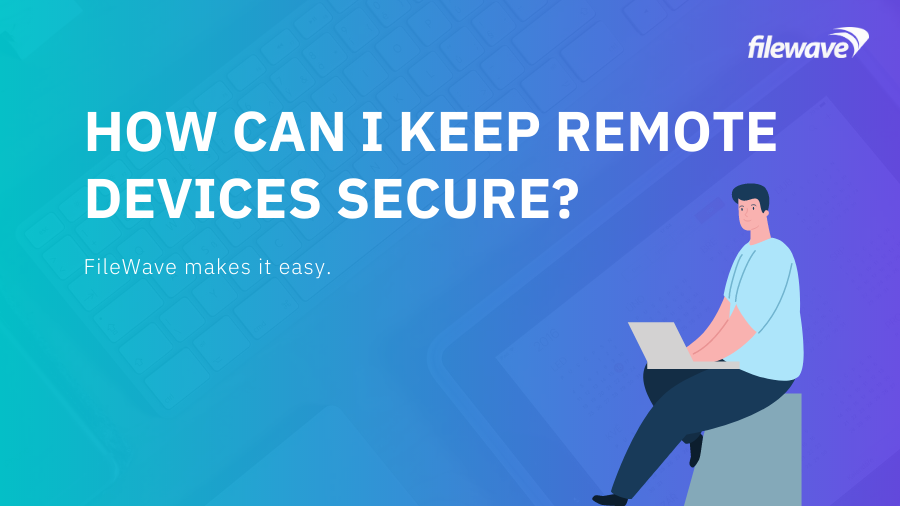Remote work has quickly become the new normal for companies around the world. Here’s how IT teams can keep remote devices secure and employees productive.
Remote work used to be a rare perk in the corporate world. As part of their COVID-19 pandemic response, employers are allowing and even mandating remote work. From large operations such as Twitter or Microsoft to small local businesses, working from home has become part of their business strategy during and after the novel coronavirus pandemic.
Remote work carries many benefits, including decreased operational costs and time savings for employees. It is not without its hurdles, however. Securing remote devices is a top challenge for IT teams enabling productivity for remote workers. Here’s how they can keep employee devices and company data secure.
What are the most common security concerns for remote workers?
Beyond the common issues for offices of phishing, secured networks, and other employee-driven needs, IT admins must contend with other challenges for remote work.
Common concerns include:
- Restricting access via secured wi-fi networks
- Enforcing automated security and antivirus measures
- Patching devices frequently to plug security gaps
- Training employees on proper security practices (locking devices, etc)
- Geolocating and remote wiping lost or stolen devices
- Making remote work easy for employees and IT support staff
Ultimately, security for remote employees is a people challenge, as departments identify what solutions reduce friction while maintaining high-quality security standards. A mix of policy, training, and enforcement via device management solutions are necessary. Security settings and configurations are one simple route to help keep employee devices secured for remote productivity.
How can I enforce security settings and configurations?
Enforcing security settings and configurations for remote employee devices doesn’t have to be a tricky task. While tech-savvy employees may try to find self-driven workarounds to restrictions, these can often pose risks to your data security. Using the right device management solution, however, provides simple corrections to this issue: by tying configuration to the employee profile, you can easily deploy and restrict security settings to your desired role.
Should an employee manage to delete or move essential security software or firewalls, that can pose a bigger issue. Solutions such as FileWave’s Patented Self-Healing can overcome this issue by automatically repairing or reinstalling deleted, missing, or corrupted security software and files. By tying these requirements to the employee’s device group, these fixes can be completed automatically, saving IT teams time and headaches.
How can I distribute and update software for remote workers?
Pushing new software, updates, and patches to devices are essential for productivity and security. However, remote networks can sometimes pose a challenge for distribution. The right device management solution will be able to connect across networks, firewalls, and NAT configurations to get essential data where it needs to go. By delivering the needed patches for OS and third-party applications when they’re available, you can reduce gaps in security for employee devices. The modern working world requires flexibility beyond on-premises software distribution and patching; the right solution will be able to achieve this across networks and other factors.
How can I prepare for the future of remote work?
If remote work is the future, the future is here. The COVID-19 pandemic has accelerated the shift towards remote operations for a large swath of the world, and it is likely to continue that trend. While remote work is a huge operational shift for companies that requires coordination across teams and leadership, there are many ways IT can enable greater remote work results:
- Enabling clear communication of user-driven security standards and expectations.
- Enforcing security standards via anti-virus and anti-malware software, configurations management, and other settings.
- Protecting installations of security software via automated solutions.
- Distributing required software and patches quickly and effectively.
- Implementing a device management solution that can connect across networks, firewalls, and NAT configurations.
- Reducing friction for end users to enable productivity.
While these are extensive principles of device management, they are easily achievable with the right solution. Ready to see how easy device management can be? Get a free, 30-day trial of FileWave today.


